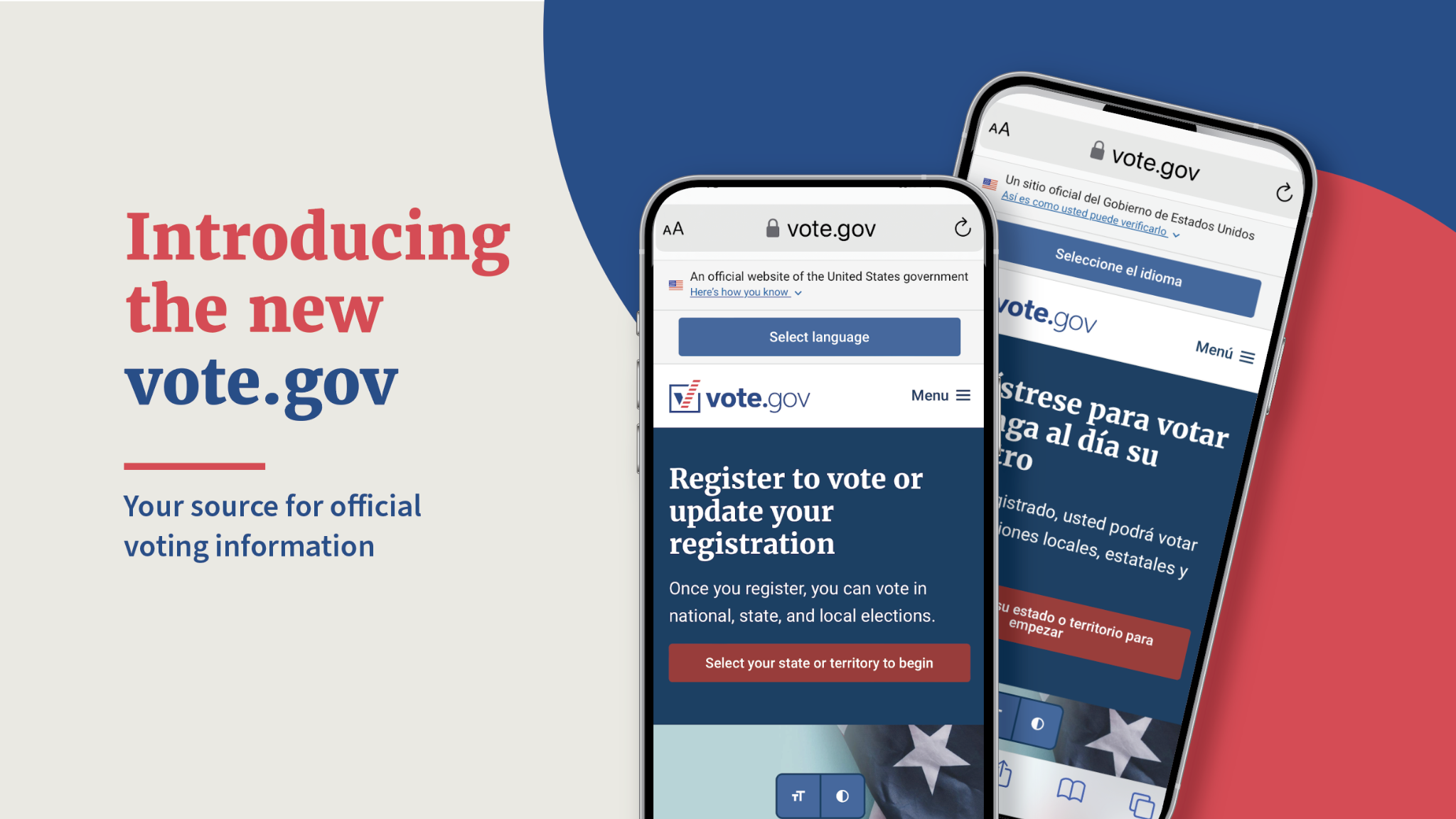
Vote.gov makes it easier for voters to find trustworthy, official voting information
Post filed in: Technology
One of the most important rights of American citizens is the right to vote. With a refreshed Vote.gov, the team has made it even easier for all eligible voters to register and vote.
Vote.gov has been a trusted source for accurate, official voting information from the U.S. government to the American public since 2016. In 2021, President Biden passed Executive Order 14019 on Promoting Access to Voting, which tasked GSA with modernizing and improving the user experience of Vote.gov.
To accomplish this, Vote.gov conducted extensive research, including:
- Interviews with eligible voters from a wide range of backgrounds.
- Working sessions with disability advocacy groups representing people with limited vision, cognitive disabilities, and other conditions.
- Online surveys asking Vote.gov users why they visited the site and if they found what they were looking for.
This research influenced improvements to the site’s design, usability, and content. Here’s what you’ll find on the redesigned Vote.gov.
More languages to reach more voters
In the past two years, Vote.gov has expanded from being a bilingual website available solely in English and Spanish. It now offers 19 languages – accommodating 96% of the American public – which ensures that eligible voters who don’t speak English have information to participate in the democratic process more confidently and effectively.
Available languages include: Amharic, Arabic, Bengali, Chinese (both simplified and traditional), French, Haitian Creole, Hindi, Khmer, Korean, Portuguese, Russian, Somali, Spanish, Tagalog, Vietnamese, and two Native American languages, Navajo and Yu’pik.
Vote.gov works with highly qualified translators and reviewers to ensure that translated information on Vote.gov is accurate, reliable, and culturally sensitive.
Making voting information more accessible for all
GSA is committed to ensuring voting information is accessible to all voters, including people who have difficulty seeing, hearing, operating computers, or who experience cognitive or learning challenges.
Vote.gov now features:
- Plain, easy-to-understand language informed by user feedback.
- Compatibility with screen readers, screen magnifiers, speech-recognition software, and other assistive technologies.
- High-contrast designs so people can see it better.
- An accessibility statement that outlines our commitment to making Vote.gov accessible to people of all abilities.
- A dedicated email address where people can submit issues related to 508 accessibility: section508-vote@gsa.gov.
- A website feedback form in English and Spanish.
- An HTML sitemap to allow for multiple ways to navigate the site.
More information about registration and voting
Vote.gov continues to direct voters to their state election websites for state-specific voting information. The public can find information about the following on Vote.gov:
- How to register to vote in each state and territory.
- How to update voter registration with a new name, address, or political party.
- How to use different voting options, including early and absentee voting.
- How to navigate the voting process for people who experience barriers to voting, as required in the Executive Order.
Vote.gov does not provide information about specific candidates or ballot measures.
We have even more exciting improvements to come, including a tool to make it easier to fill out the National Mail Voter Registration Form. Stay tuned for updates on the Public Experience blog.

 U.S. General Services Administration
U.S. General Services Administration
